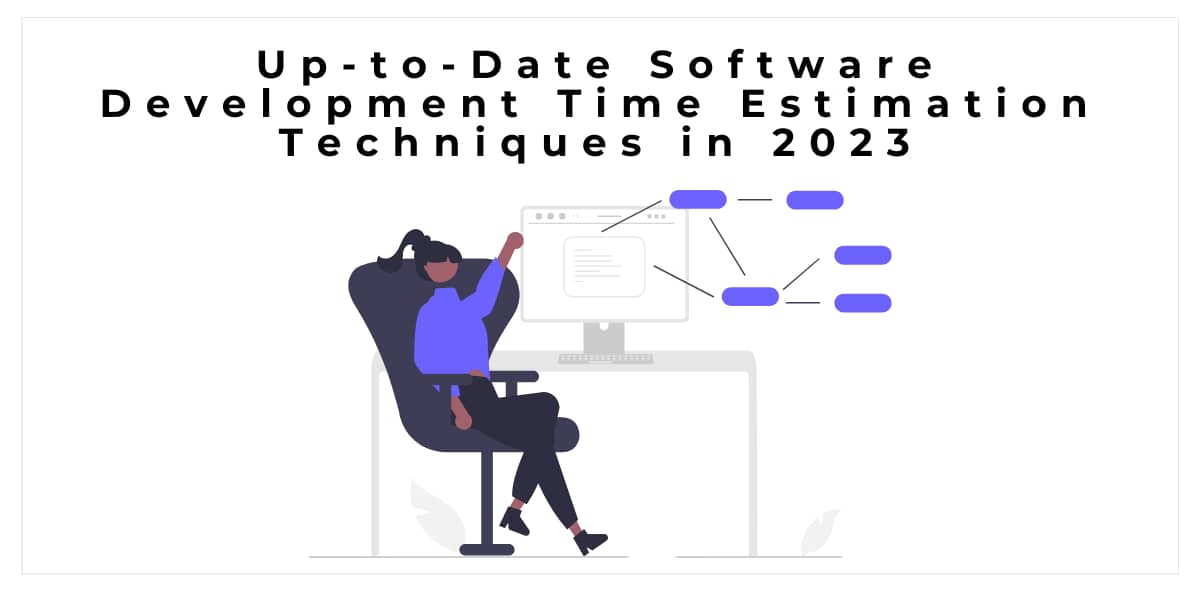Software developers are expensive. Most agencies and freelancers bill by the hour, so whenever you are planning a large project, you’ll need to estimate time for software development accurately if you want to stay on budget.
In this article, we’ll discuss software development estimation techniques you can use when you are planning a big project.
A bit of the history of software development time estimation methodology
The history of software development time estimation techniques dates back to the early days of software engineering. As software projects became more complex and larger in scale, the need for accurate estimations of development time became crucial for planning and resource allocation. Here is a brief overview of the evolution of software development time estimation techniques:
Intuition-Based Estimates.
In the early stages of software development, estimates were often based on the intuition and experience of developers.
Algorithmic Model.
In the 1970s, researchers began exploring algorithmic models to estimate software development time. One of the most prominent models was the COCOMO (COnstructive COst MOdel) developed by Barry Boehm.
Function Point Analysis.
In the 1980s, function point analysis (FPA) emerged as a technique for estimating software development efforts. FPA measures the functionality provided by a system based on user requirements.
Expert Judgment.
Experienced professionals with domain knowledge provided their input and insights to refine the estimates.
Estimation by Analogy.
As the software industry matured, practitioners started utilizing historical data and past projects as references for estimation.
Parametric Models.
With advancements in data analysis and statistical techniques, parametric models gained popularity in the 1990s.
Agile and Iterative Approaches.
Traditional estimation techniques faced challenges when applied to Agile and iterative development methodologies.
Machine Learning and Data-Driven Estimation.
In recent years, the availability of large datasets and advancements in machine learning have opened up new possibilities for software development time estimation.
Thus, software development time estimation techniques have evolved from intuitive judgment to more systematic and data-driven approaches. While no technique can guarantee perfect estimates, a combination of historical data, expert judgment, and appropriate estimation models can help improve the accuracy of software development time predictions.
Methods you can use to estimate time for software development
Software Development Life Cycle time estimation is the process of predicting the amount of time required to complete each phase of the SDLC, from requirements gathering to deployment. It is a structured approach to software development that outlines the phases involved in developing a software product, from initial planning to final release, and helps stakeholders to determine the resources required, project timelines, and expected costs. There are several software development time estimation methods you can use, so let's look at how to estimate software development time in practice.
Agile Estimation
Agile estimation breaks down the project into smaller, more manageable chunks or user stories. Each user story is assigned an estimated time for completion, typically measured in story points. The estimation process involves a collaborative effort between the development team, project manager, and stakeholders, who together consider the complexity and effort required for each user story. Let’s say a user asks for a wish list to keep track of products they want to purchase on an ecommerce website. The team will break the story down into smaller tasks and then estimate the effort required for each task using a technique such as Planning Poker, where each team member assigns a point value to each task based on its complexity and the effort required.
For example, the team might assign the following point values to the tasks:
- Creating a database table: 2 points
- Adding "Add to Wish List" button: 3 points
- Adding "View Wish List" button: 2 points
- Creating wish list form: 5 points
- Testing and debugging: 3 points
Once the team has estimated the effort required for each task, they can use the point values to estimate the total effort required for the user story. In this case, the total effort would be 15 points. The team can then use this estimate of how many working hours it will take to complete.
Bottom-Up Estimation
Bottom-up estimation is a software development time estimation technique that involves breaking down a project into its smallest components, such as functions or modules. Each component is then assigned an estimated time for completion, which is used to build up a comprehensive estimate for the entire project. Bottom-up estimation is very useful for estimating software development time on large and complex projects, where it may be difficult to estimate the effort required for the project as a whole.
Three-Point Estimation
Three-point estimation is a software development time estimation technique that involves assigning three estimates for each task: a best-case estimate, a worst-case estimate, and a most likely estimate. These estimates are then combined using a weighted average to provide a final estimate for the task. You should use three-point estimation for tasks with a high degree of uncertainty, where there is a wide range of possible outcomes.
Data-Driven Estimation
Data-driven estimation is a software development time estimation technique that involves analyzing historical data to predict the effort required for similar projects. This technique uses data from previous projects, including the time required for each task and the resources used, to develop estimates for new projects. It is particularly useful for development teams that have access to a large amount of historical data.
Expert Judgment
Of course, it’s not always possible to reach a calculated estimate. Sometimes, you have to rely on your judgment or the judgment of experts in your team. Experts can include developers, project managers, and other stakeholders who have experience in similar projects or technologies. Expert judgment can be handy if you are dealing with new technology.
Time estimation is an important part of planning any software project. You need to know how much developers will cost, what the deadlines will be, and when you can expect the project to launch. Now you know how to estimate time for software development and can budget and plan your project accordingly.








